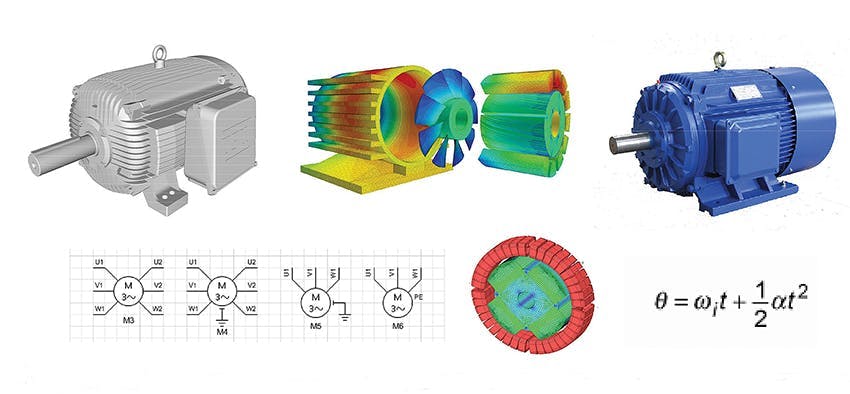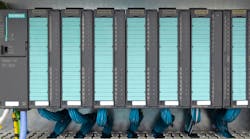There is no question that the model-based enterprise (MBE) is the preferred track for organizations aiming for best-in-class development practices and, ultimately, more innovative products. Yet too many businesses lack a clear vision for effectively transitioning away from long-standing, document-centric practices to a model-based orientation – and lacking that vision impedes their ability to fully capitalize on digital transformation.
Terms like model-based engineering, model-based definition, and the model-based enterprise have infiltrated engineering circles with recognition that an enterprise-wide shift can drive efficiencies and lower costs all while accelerating product innovation. Increasing product complexity, combined with abbreviated product delivery cycles, are putting stress on traditional document-centric engineering processes. This is giving rise to the need for a more holistic, digitized approach that promotes agility across the product lifecycle.
While organizations see the upside to a model-based approach, many have no grasp on what it takes to get there. Too many organizations lack an understanding of the different elements surrounding digitization and have a limited sense of what’s required to establish end-to-end connectivity of information structures.
A recent survey conducted by strategic management consulting firm CIMdata indicated there’s a lot of work ahead as organizations chart their courses to digitization. A third of companies responding to CIMdata’s research confirmed they were still managing product requirements with a document-centric approach and were nowhere near ready to embrace the data and data-structure focus consistent with model-based engineering and design processes—let alone across the entire product lifecycle.
Without models—whether 3D models for designs or information models for other aspects of business—there is no solid foundation to build a model-based enterprise and digital thread, both central planks of digital transformation. Gartner defines digitization as employing digital technologies to change the business model and provide new revenue and value-producing opportunities. It’s important to note that this is not just about becoming a digital business; rather, the shift is about digitizing products and building out a digital information thread to drive more innovative offerings.
Digitization also changes the very nature of products. As opposed to selling physical products and services, industries are moving to a world of connected devices and product-as-a-service business models where, for example, rather than selling a piece of bottling equipment, the company gets paid for every bottle filled, capped, and packed. In this new paradigm, the information about how the product is operating is more important than the physical product. Again, the shift reinforces the importance of moving away from documents to a model-based orientation connected by a digital thread.
As organizations move ahead with digitization and a model-based approach, they advance the concept of a digital twin and digital thread. A digital thread is the use of digitalization to enable rapid communication between models that span design, analysis, manufacturing processes, quality measurement and test systems, electronics, and software – to field-service models and all the captured phases of a product’s creation and even end-use. The digital thread is essentially the relational connection of each aspect of a component’s development, change history, and early requirements and specifications.
This thread can run through PLM, ERP, and MES systems and all programs that “touch” a product and organization, connecting otherwise-siloed functions and disciplines. While a digital thread does not have to fuse together all aspects of product development, the opportunity is there, if efficient and strategic to do so.
Connected by the digital thread, a digital twin provides the virtual representation of a physical asset or collection of physical assets and represents the digital design-to-analysis-to-production phases listed above. Digital twins can comprise a rich history of a product or related service from concept to completion.
CIMdata research found that companies associate a variety of benefits with the digital twin, including improved collaboration across engineering functions, a greater propensity for first-time-right products, design verification, and increased business agility. At the same time, a number of roadblocks to success with digital twins were identified, including an ineffective or broken digital thread as well as challenges associated with organizational culture and the collection of physical-instance-specific data and performance characteristics.
A roadmap to a model-based enterprise
In order to ensure success with model-based enterprise transformation, organizations should develop and focus on three critical areas:
Maturing the digital thread. There’s value to the digital thread—regardless of whether the end game is a model-based enterprise—and the more mature the digital thread, the greater the chances for success with a model orientation. Given that a digital thread is all about connecting points of data about a product, the best way to mature the thread is to build it out with additional, relevant nodes or data points. If documents, CAD data, or bill of materials are already encapsulated in the digital thread you can extend the thread with additional content, such as requirements, simulation details, even manufacturing-process plans.
It's also important to mature the digital thread with granularity of data. For example, if a digital thread already includes drawings, the next step would be to add detailed 3D models of individual components. It’s important to build strands within the digital thread to connect sub-nodes as well as make each individual sub-node semantically richer with additional context such as values or units. In this way, the data has more meaning and creates new possibilities for modeling the product on the way to full-fledged MBE.
The added context also makes it easier to make design changes as all the requisite information and details are easily accessible. Moreover, by creating granular, atomic data connections, and establishing a multi-directional digital thread, organizations are assured of value all along the way, creating models that can be shared across multiple disciplines and domains.
Data exchange and integration. This step is about extending the digital thread across borders, whether that involves proper integration between systems or between organizations. Consider two suppliers collaborating, each with their own CAD systems and digital thread. With data exchange and integration as a focus, partners could extend the digital thread by integrating bills of materials across system boundaries, such as PLM and ERP, or translating native CAD data into a neutral format so engineers across teams can collaborate using different software.
There is also potential in establishing automatic data integration and transmission so the digital thread is continuously maintained across boundaries. Each of these integration and data exchange examples, coupled with added services like translation and validation, will go far in enriching the digital thread.
Enable organizational change. If an organization is going to have success working with models across the enterprise, it’s not just about taking advantage of the latest platforms and tools – they must also establish the right culture and foster the requisite organizational change. Adopting a digital thread and model-based approach requires organizations to work differently. Engineering and manufacturing must collaborate and exchange data in new ways, but the changes also extend to longstanding business practices and conventions.
For example, a purchase order is no longer based on 2D drawings that are interpreted by a human; now the contractual document is based on a 3D model that must be interpreted by a specific software format or standard. Moving from simple document exchange to collaborating with highly specialized models based on specific domains requires different techniques and processes.
To facilitate the changes, companies should embrace the ADKAR model, which calls for awareness of model-based concepts and benefits; cultivates a desire for why the organization needs models; educates staff on new model-based ways of working; trains people on new tools and processes; and reinforces organizational change from all directions, including top management.
Cultivating a model-based mindset and maturing the digital thread is a significant step up for most organizations. A seasoned partner with expertise in model-based practices as well as organizational change management can be a guidepost for the transition, ensuring businesses realize the full value of digitizatmailto:[email protected].
Derek Neiding is the vice president of Razorleaf, a consulting & systems integrator specializing in product lifecycle management (PLM.)







